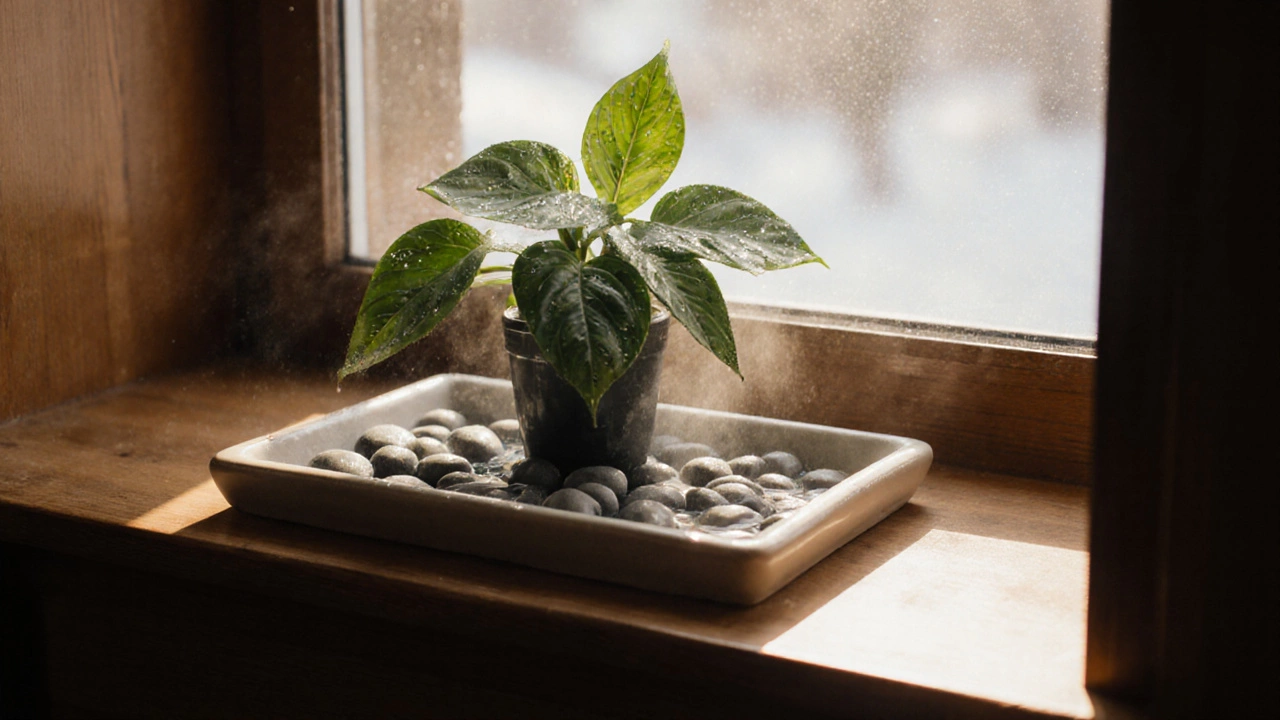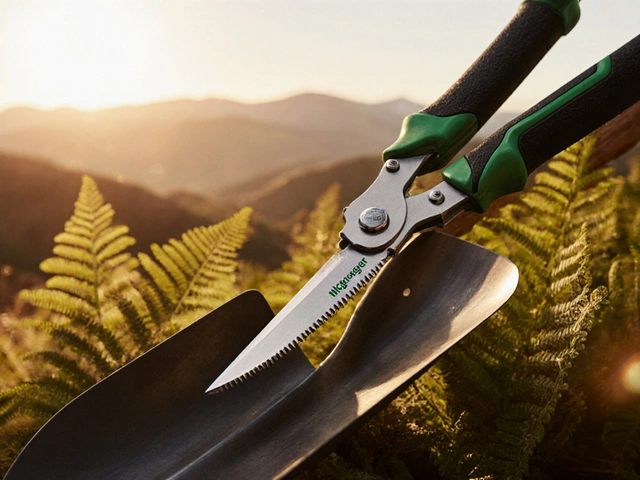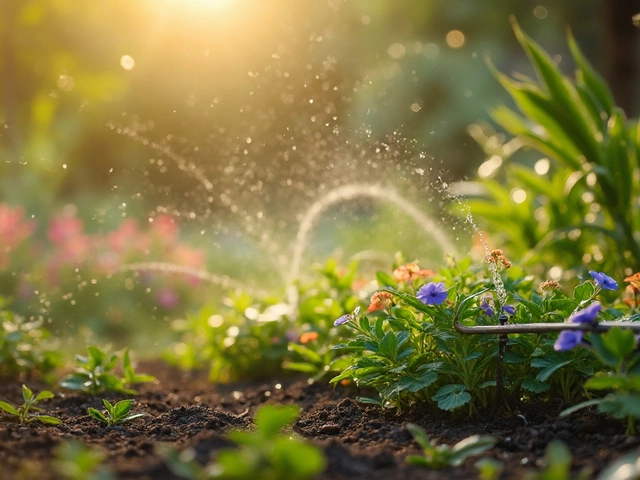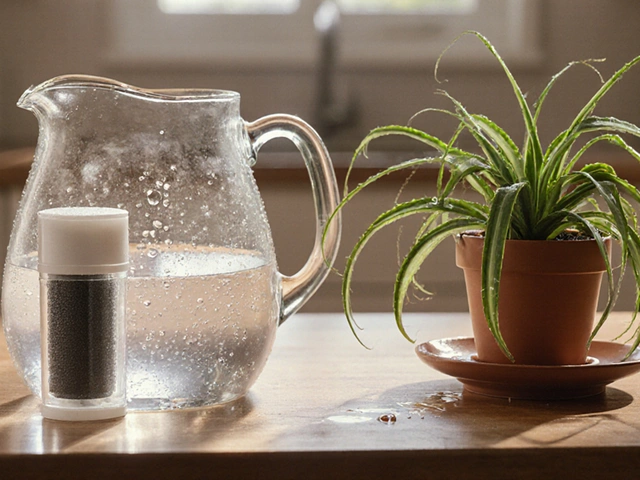Pebble Tray Compatibility Checker
Check Your Plant's Needs
Enter any indoor plant name to see if it benefits from a pebble tray
If you’ve ever noticed brown leaf tips, curling edges, or slow growth on your indoor plants-even when you’re watering them regularly-it might not be a watering issue. It could be dry air. Most houseplants come from tropical jungles, not living rooms. And in winter, when heaters run and windows stay sealed, the humidity in your home can drop below 20%. That’s desert-level dry. That’s where a pebble tray comes in.
What Is a Pebble Tray?
A pebble tray is a simple, low-tech tool: a shallow dish filled with pebbles and water. You place your plant pot on top of the pebbles, making sure the bottom of the pot doesn’t touch the water. As the water evaporates, it raises the humidity right around your plant. It’s not a humidifier. It’s not fancy. But it works-especially for plants that hate dry air.
Which Plants Actually Need This?
Not every plant needs a pebble tray. But if your plant is from a rainforest, swamp, or tropical forest floor, it’s probably one of them. Here are the most common indoor plants that benefit:
- Calathea - These plants are humidity addicts. If the air dips below 50%, their leaves start to crisp and curl.
- Peace Lily (Spathiphyllum) - They droop dramatically when dry, but also develop brown leaf edges if humidity’s too low.
- Ferns (Boston, Maidenhair, Bird’s Nest) - Ferns evolved in damp, shaded forests. Dry air turns their fronds brittle and pale.
- Monstera deliciosa - Even though it’s trendy, Monstera still prefers 60%+ humidity. New leaves may come out small or misshapen without it.
- Philodendrons (especially heartleaf and Brasil) - They’ll survive dry air, but they won’t thrive. Growth slows, and leaves lose their shine.
- Orchids (Phalaenopsis, Dendrobium) - Many indoor orchids are epiphytes. They absorb moisture from the air, not just the soil.
- Pothos (Golden, Marble Queen) - They’re tough, but even they show stress with dry tips if humidity drops below 40%.
- Fittonia (Nerve Plant) - One of the most humidity-sensitive plants you can own. If the air’s dry, it wilts fast.
These plants don’t just like humidity-they depend on it. In their native habitats, humidity hovers between 60% and 80%. Your home in November? It’s probably 30% to 40%. That’s a big gap.
How to Set Up a Pebble Tray Right
It sounds easy, but most people mess it up. Here’s how to do it correctly:
- Choose a tray or dish that’s slightly wider than your plant’s pot. A baking tray, shallow ceramic dish, or plastic storage container works.
- Fill it with clean pebbles or aquarium gravel. Use stones about 1-2 cm wide. Avoid fine sand-it clogs and doesn’t drain well.
- Add water until it’s just below the top of the pebbles. The water level should never touch the bottom of the pot.
- Place your plant pot on top of the pebbles. If the pot is sitting in water, the roots will rot.
- Refill the water every 2-4 days. Let it evaporate completely before refilling to avoid mineral buildup.
Pro tip: Use rainwater or distilled water if your tap water is hard. Minerals from tap water leave white crust on the pebbles and can harm sensitive plants.
Why It Works (And Why It’s Better Than Mist)
You might’ve heard people say to mist your plants daily. Don’t. Misting gives a quick burst of moisture, but it evaporates in minutes. It doesn’t raise the humidity around the plant for long. Worse, wet leaves in low light can invite fungal diseases like leaf spot or powdery mildew.
A pebble tray, on the other hand, creates a steady, gentle microclimate. The water evaporates slowly, 24 hours a day. It’s passive. It doesn’t need electricity. It doesn’t make a mess. And it works even when you’re away for the weekend.

What Doesn’t Work
Some plants don’t need extra humidity-and putting them on a pebble tray can hurt them.
- Succulents - Jade, Echeveria, Haworthia-they store water in their leaves. High humidity makes them rot.
- Cacti - They thrive in dry air. A pebble tray is unnecessary and risky.
- Snake Plant - Tough as nails. They prefer dry soil and low humidity.
- Zamioculcas zamiifolia (ZZ Plant) - These are drought-tolerant survivors. Humidity won’t help them grow faster.
If you’re not sure, check the plant’s native habitat. If it’s from a desert, arid region, or dry woodland, skip the tray. Stick to well-draining soil and less frequent watering.
Other Ways to Boost Humidity
Pebble trays aren’t the only option. But they’re the cheapest and safest. If you need more humidity, try these:
- Group plants together - Plants release moisture through transpiration. A cluster of five plants creates its own little humid zone.
- Use a humidifier - Especially useful in winter. Look for one with a built-in hygrometer to keep humidity between 50-60%.
- Place plants in bathrooms - If you have a window and decent light, the steam from showers helps.
- Keep a bowl of water nearby - Not as effective as a pebble tray, but better than nothing.
But here’s the thing: pebble trays work best when combined with good light and proper watering. No trick replaces the basics.
Real Results: What You’ll See
After a few weeks on a pebble tray, you’ll notice changes:
- Leaf tips stop turning brown.
- New leaves unfurl fully, without curling or tearing.
- Plants grow faster and look greener.
- Ferns regain their lush, drooping texture.
- Calatheas stop folding their leaves at night-they stay open longer.
One user in Auckland told me her Maidenhair Fern was dying after three months indoors. She added a pebble tray. Two weeks later, new fronds started growing. By the end of the month, it looked like a new plant.
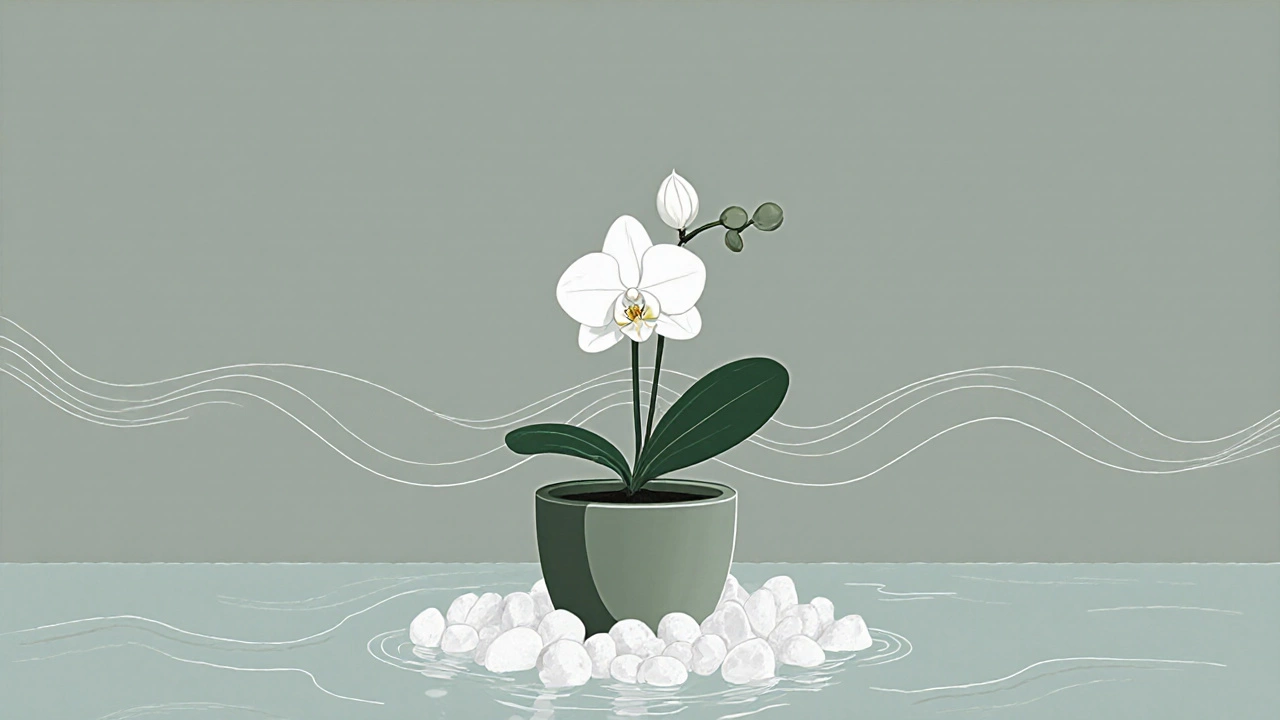
Common Mistakes to Avoid
Even simple tools can go wrong. Here are the top three mistakes:
- Pot sitting in water - This causes root rot. Always keep the pot above the water line.
- Using dirty or mineral-heavy water - Tap water leaves white crust on pebbles and can build up salts in the soil. Use rainwater or filtered water.
- Forgetting to refill - Dry pebbles = no humidity. Check it weekly, especially in heated rooms.
Also, don’t use decorative stones that are too small. Fine gravel or glass beads can compact and hold water against the pot. Stick to coarse pebbles.
When to Skip the Pebble Tray
There are times when a pebble tray isn’t worth it:
- Your home stays humid year-round (like in coastal areas with mild winters).
- You have a whole-house humidifier already running.
- Your plant is a drought-tolerant species (see list above).
- You’re not consistent with refilling the tray.
If you’re not going to maintain it, don’t start it. A neglected pebble tray can become a breeding ground for mold or gnats.
Final Thoughts
A pebble tray isn’t magic. But for the right plants, it’s one of the most effective, affordable, and quiet ways to give them what they really need: humidity. It’s the difference between a plant that survives and one that thrives. If you’ve got a Calathea, a fern, or a Monstera that looks tired, try this first. It takes five minutes to set up. And it might just bring your plant back to life.
Do pebble trays attract bugs?
Pebble trays don’t attract bugs if they’re maintained properly. Standing water can attract fungus gnats, but only if the water level touches the soil or if organic debris (like dead leaves) is in the tray. Keep the water clean, refill regularly, and avoid letting the tray go dry for weeks. Using distilled water also helps prevent mineral buildup that can encourage mold.
Can I use pebbles from outside?
You can, but clean them first. Outdoor pebbles may carry pests, fungi, or chemicals. Rinse them under hot water, then soak them in a mix of water and a drop of mild dish soap for 30 minutes. Rinse again and let them dry in the sun for a day before using.
How often should I refill the water?
Every 2 to 4 days, depending on your home’s temperature and airflow. In winter, with heaters running, you may need to refill every 2 days. In summer or humid climates, it might last 5-7 days. Check the water level weekly-when it’s low, refill before it dries out completely.
Can I use sand instead of pebbles?
No. Sand holds water too tightly and can cause the pot to sit in moisture, leading to root rot. It also compacts and doesn’t allow for good evaporation. Stick to coarse pebbles or aquarium gravel-they let water flow underneath while keeping the pot dry.
Will a pebble tray help my succulents?
No. Succulents and cacti are adapted to dry environments. Adding extra humidity increases the risk of rot, especially if the soil doesn’t drain quickly. They need bright light and dry soil-not moisture in the air. Skip the tray for these plants.
